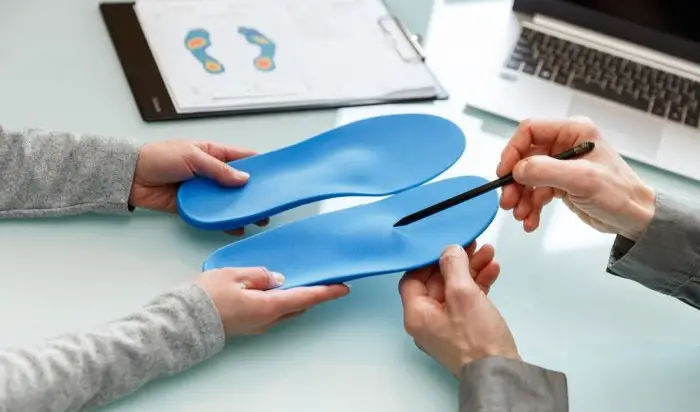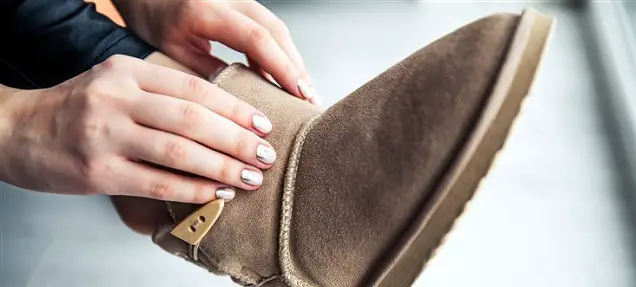
Insoles and orthotics are the two most popular solutions for foot-related problems that people suffer from. They play a significant role in relieving pain, swelling, and other foot-related conditions (such as flat feet, high arches, bunions, and other postural issues) in a highly efficient manner.
People often use these terms as if they mean the same thing, but in reality, orthotics and insoles serve very different purposes. Knowing how they differ can make all the difference when it comes to solving your foot troubles.
In this guide, I’ll walk you through the key distinctions between orthotics and insoles, highlight their unique benefits, and share when each might be the better choice.
Whether you’re battling heel pain, plantar fasciitis, or simply need a little extra comfort and support for everyday wear, this breakdown will help you choose with confidence.
Insoles vs. Custom Orthotics
Insoles and Orthotics are often used interchangeably, and both indeed address similar foot or ankle problems. But both of these are very different from each other.
Orthotics are custom-made to match the exact shape of your feet and address specific foot conditions. Think of them as a tailored solution—podiatrists or foot specialists usually prescribe them to give you the right kind of support where you need it most.
Insoles, on the other hand, are the ready-to-use option you’ll find over the counter. They’re designed for general comfort and cushioning rather than solving individual foot problems. While they’re not personalized, they can still provide welcome relief for everyday aches, fatigue, or minor discomfort.
In short, orthotics are about precision and medical-level support, while insoles are about convenience and comfort. Choosing between the two really depends on whether you need targeted treatment or just a boost in daily comfort.
Now that you have a basic idea, let’s look at the ways they are different from each other in detail below.
| Feature | Insoles | Custom Orthotics |
|---|---|---|
| Purpose | Provides general cushioning and comfort | Corrects foot mechanics, supports arches, and addresses specific foot issues |
| Fit | Ready-to-use, standard sizes | Tailored to your foot shape and condition |
| Support | Mild to moderate support | Strong, targeted support for specific problems |
| Durability | Lasts a few months | Can last 1–5 years |
| Cost | Budget-friendly | Higher cost due to customization |
| Accessibility | Available over the counter | Requires podiatrist visit or prescription (some OTC options exist) |
| Best For | Occasional foot soreness, general comfort | Chronic pain, flat feet, plantar fasciitis, overpronation, and other biomechanical issues |
| Effectiveness | Temporary relief | Long-term correction and pain relief |

What are Insoles? (Different Types with Pros & Cons)
Insoles, commonly referred to as arch supports or shoe inserts are very popular for treating various foot-related problems and can be found easily in drug stores, pharmacies, and even at Wal-Mart.
They are generally made up of a soft material, which is usually foam or a gel. They provide additional support to your feet by acting like a cushion, which ultimately helps in curing various physical deformities in the feet.
Different types of insoles
Over-the-counter insoles come in a variety of lengths, giving you options depending on your specific needs. If your goal is to ease pain in a particular area of the foot, such as the heel or the ball, a smaller insert like a heel cup or ball-of-foot cushion might be more effective than a full-length insole.
Soft insoles, often made from gel or foam, focus on comfort. They help relieve pressure points that cause soreness by adding an extra layer of cushioning inside your shoes.
Semi-rigid insoles take things a step further by blending comfort with support. These are reinforced with a supportive shell that gives the arch more structure while still providing cushioning.
Rigid insoles, on the other hand, are commonly used in dress shoes that naturally lack support. While they provide firm stability, it’s equally important that they have a breathable fabric top to keep your feet cool and help wick away sweat throughout the day.
Pros and cons of over-the-counter insoles
Many people choose insoles because of the practical benefits they offer compared to orthotics. One of the biggest advantages is easy access—you can find them almost anywhere, from your local grocery store to a neighborhood pharmacy.
That means if you suddenly need extra support, you don’t have to wait or go through the hassle of a prescription. You can simply pick up a pair and start using them right away.
Another plus is that insoles are effective for general comfort and support. Since they’re ready to use, you can slip them into your shoes immediately and feel the difference, especially if you’re dealing with everyday soreness or fatigue.
And of course, there’s the cost factor. Insoles are much more budget-friendly than custom orthotics, making them an attractive option for anyone who doesn’t want to invest heavily.
That said, insoles do come with their drawbacks.
Their durability and lifespan tend to be limited, meaning you may need two to three pairs a year since one pair rarely lasts more than six months.
Because they’re mass-produced, insoles also lack the personalized arch support that custom orthotics provide. Over time, they can lose their shape quickly, which makes regular replacement important if you rely on them daily.
While insoles are commonly used to ease discomfort from fallen arches or general foot pain, it’s important to note that they are mostly a short-term solution. They can certainly provide relief, but they don’t correct the root cause of chronic foot issues.

What are Custom Orthotics? (Different Types with Pros & Cons)
Traditionally, orthotics were seen as medical devices, custom-made to fit your feet and prescribed by a podiatrist. While that’s still the gold standard, orthotics today have become more versatile, with choices ranging from over-the-counter options to fully personalized fittings.
Examples include foot orthotics (insoles), ankle-foot orthoses (AFOs), knee braces, and spinal braces. No matter the type, their primary purpose remains the same: to support, align, and correct the biomechanical issues that influence how your feet move.
If you’re struggling with conditions such as overpronation, plantar fasciitis, metatarsalgia, shin splints, or Achilles tendonitis, orthotics can make a noticeable difference.
Beyond easing pain, they also help improve balance, encourage better posture, and provide vital support for weak or recovering muscles and joints—making them a long-term ally for both comfort and foot health.
Different types of orthotics
Orthotics come in different styles and lengths to suit various needs. For example, full-length orthotics provide total contact support across the entire foot, while ¾-length designs are better suited for tighter shoes where space is limited.
There are even special options for kids and toddlers with flat feet, as well as performance-focused orthotics designed for runners and active lifestyles.
Broadly, orthotics fall into three categories.
Custom-made orthotics are created by a podiatrist who takes a mold or scan of your foot, ensuring a perfect fit tailored to your specific condition.
Heat-moldable orthotics offer a semi-custom option—these are made from special materials that adapt to the shape of your foot when heated, giving you more personalized support right inside your shoes.
Lastly, premade or over-the-counter orthotics are widely available in doctors’ offices, wellness shops, and even department stores. While they aren’t customized, they’re designed to address common foot problems and are a more accessible choice for many people.
Pros and cons of custom orthotics
One of the biggest strengths of custom orthotics is their effectiveness. Because they are designed specifically for your feet, they target the exact problem you’re dealing with—whether it’s overpronation, plantar fasciitis, or another condition—making them far more precise than generic inserts.
They also offer a personalized fit. Unlike off-the-shelf options, custom orthotics are molded to the unique shape of your foot and provide corrections tailored to your individual needs. This means better comfort, better alignment, and better long-term results.
Another advantage lies in the materials. Specialists choose the right combination of plastics, foams, or fabrics to give you the support you need without compromising on comfort. Since they’re designed to fit your shoes properly, you don’t have to worry about trimming or forcing them in.
Of course, custom orthotics do have a few downsides.
The first is time. Because they require a professional consultation, mold, or scan, you’ll need some patience before you can start using them.
Another factor is weight. Since custom orthotics are often made with sturdier materials for durability, they may feel heavier than standard insoles, particularly in lighter footwear.
And then there’s the cost. Being tailor-made by specialists, they are naturally more expensive than ready-to-wear insoles. However, many people see this as an investment, given that custom orthotics usually last much longer—often between one and five years—and some insurance plans even cover them if prescribed for medical reasons.
Insoles vs. Orthotics: What to Choose for Flat Feet and Arch Support?
Insoles and orthotics both ease foot pain, but they serve different purposes. Insoles focus on comfort, adding cushioning to reduce fatigue from long hours on your feet. Orthotics, on the other hand, are a medical solution—designed to correct alignment, support arches, and address the root cause of chronic pain.
If you only feel occasional soreness, a quality insole may be enough. But for persistent issues like flat feet or recurring arch pain, custom orthotics are the smarter choice. They don’t just mask discomfort; they provide lasting correction and relief.
Remember that you may also come across shoe inserts, which are a type of insole designed for specific purposes such as arch support or joint pain relief. Essentially, all inserts are insoles, but not all insoles are inserts.
Then there are also prosthetics that aim to improve mobility and quality of life. Their goal is to restore both function and appearance, helping individuals perform everyday activities more easily. Common prosthetics include lower-limb devices for walking and upper-limb devices for grasping and handling objects.
Overall, understanding all the above differences is essential when seeking the right solution for mobility or pain issues. Consulting a healthcare professional ensures that the device—whether insoles, orthotics, or prosthetics—is tailored to your unique needs and provides the most effective support or replacement.




